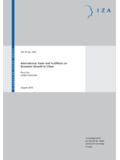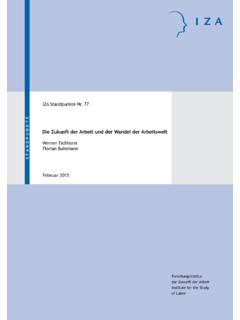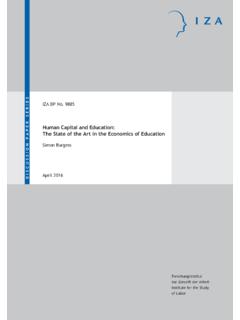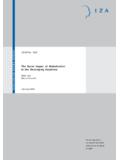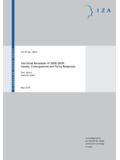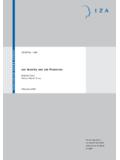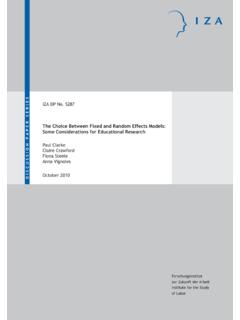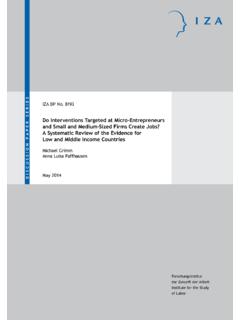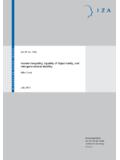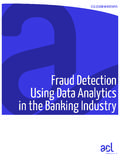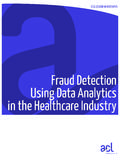Transcription of Does Child Abuse Cause Crime?
1 IZA DP No. 2063 does Child Abuse Cause Crime? Janet CurrieErdal TekinDISCUSSION paper SERIESF orschungsinstitutzur Zukunft der ArbeitInstitute for the Studyof LaborApril 2006 does Child Abuse Cause crime ? Janet Currie Columbia University, UCLA, NBER and IZA Bonn Erdal Tekin Georgia State University, NBER and IZA Bonn discussion paper No. 2063 April 2006 IZA Box 7240 53072 Bonn Germany Phone: +49-228-3894-0 Fax: +49-228-3894-180 Email: Any opinions expressed here are those of the author(s) and not those of the institute. Research disseminated by IZA may include views on policy, but the institute itself takes no institutional policy positions. The Institute for the Study of Labor (IZA) in Bonn is a local and virtual international research center and a place of communication between science, politics and business.
2 IZA is an independent nonprofit company supported by Deutsche Post World Net. The center is associated with the University of Bonn and offers a stimulating research environment through its research networks, research support, and visitors and doctoral programs. IZA engages in (i) original and internationally competitive research in all fields of labor economics, (ii) development of policy concepts, and (iii) dissemination of research results and concepts to the interested public. IZA discussion Papers often represent preliminary work and are circulated to encourage discussion . Citation of such a paper should account for its provisional character. A revised version may be available directly from the author. IZA discussion paper No. 2063 April 2006 ABSTRACT does Child Abuse Cause crime ?* Child maltreatment, which includes both Child Abuse and Child neglect, is a major social problem.
3 This paper focuses on measuring the effects of Child maltreatment on crime using data from the National Longitudinal Study of Adolescent Health (Add Health). We focus on crime because it is one of the most socially costly potential outcomes of maltreatment, and because the proposed mechanisms linking maltreatment and crime are relatively well elucidated in the literature. Our work addresses many limitations of the existing literature on Child maltreatment. First, we use a large national sample, and investigate different types of Abuse in a similar framework. Second, we pay careful attention to identifying the causal impact of Abuse , by using a variety of statistical methods that make differing assumptions. These methods include: Ordinary Least Squares (OLS), propensity score matching estimators, and twin fixed effects.
4 Finally, we examine the extent to which the effects of maltreatment vary with socio-economic status (SES), gender, and the severity of the maltreatment. We find that maltreatment approximately doubles the probability of engaging in many types of crime . Low SES children are both more likely to be mistreated and suffer more damaging effects. Boys are at greater risk than girls, at least in terms of increased propensity to commit crime . Sexual Abuse appears to have the largest negative effects, perhaps justifying the emphasis on this type of Abuse in the literature. Finally, the probability of engaging in crime increases with the experience of multiple forms of maltreatment as well as the experience of Child Protective Services (CPS) investigation. JEL Classification: I1, K4 Keywords: maltreatment, Child Abuse , crime Corresponding author: Erdal Tekin Department of Economics Andrew Young School of Policy Studies Georgia State University Box 3992 Atlanta, GA 30302-3992 USA Email: * We would like to thank Neil Guterman, Christina Paxson, Chris Ruhm, Joyce Tabor, Volkan Topalli, and participants in seminars at the City University of New York, Columbia s School Social Work, Columbia s Teachers College, 2005 Population Association of America Meetings, 2005 IZA/SOLE Meetings, 2005 SEA Meetings, Georgia State University, MDRC, University of Illinois at Chicago, and Koc University for helpful comments.
5 Roy Wada provided excellent research assistance. 1. Introduction Child maltreatment, which includes both Child Abuse and Child neglect, is a major social problem. According to the Department of Health and Human Services (1996), over a million children are victims of maltreatment annually. Over half a million children suffer serious injuries, and about 1,500 children die, making Child maltreatment the leading Cause of deaths from injuries in children over a year old (Institute of Medicine, 1999). In addition to this appalling immediate toll, Child Abuse is thought to have many harmful long-term consequences. This paper focuses on the effect of Child maltreatment on crime using data from the National Longitudinal Study of Adolescent Health (Add Health). We focus on crime because it is one of the most socially costly potential outcomes of maltreatment, and because the proposed mechanisms linking maltreatment and crime are relatively well elucidated in the literature.
6 The link between Child maltreatment and crime is a staple of the news media. For example, the media noted that John Muhammad, the Washington sniper, was regularly and severely beaten as a Child by several relatives, including an uncle who beat another Child to (CNN, February 10, 2004). Child neglect is also often implicated. Neighbors of a nine-year-old who stabbed her best friend to death were reported to have angrily blamed the young attacker s absent, alcoholic mother yesterday for the Memorial Day tragedy (The New York Post, June 1, 2005). Yet there is little hard evidence available about the effects of Child maltreatment on crime , and there is criticism of the extent to which a cycle of violence has been substantiated in the literature ( Widom, 1989a). Our work addresses many limitations of the existing literature on Child maltreatment. First, according to the National Research Council (NRC) (1993) most studies focus on one type of maltreatment (most often sexual Abuse ).
7 Little is known about how the effects of different 1types of Abuse compare (Rebellon and Van Gundy, 2005). We will examine the effects of different types of Abuse in a similar framework. Second, most studies are based on clinical data and convenience samples. In contrast, we use data from a national survey that includes a large control group of children who were neither maltreated nor committed To our knowledge, this is the first study of the effect of Child Abuse on future criminality in the economics literature. Third, the NRC panel noted that Distinguishing consequences that are associated directly with the experience of Child maltreatment itself rather than other social disorders is a daunting task for the research investigator (NRC 1993, page 209). We attack the problem of isolating the causal effects of maltreatment by comparing estimates obtained using several different estimation methods all of which rely on differing assumptions.
8 These methods include: Ordinary Least Squares (OLS), propensity score matching estimators, and twin fixed effects. We will show that the estimates are remarkably similar, regardless of estimation method. Fourth, the NRC noted that while poor families are over-represented in the caseloads of Child protective services, there has been little investigation of the extent to which the consequences of maltreatment vary with socio-economic status (SES). Higher SES children have better outcomes in many respects ( Case, Lubotsky and Paxson, 2002; Currie and Stabile, 2003), and it is possible that high SES is also protective against the effects of Abuse . We look at this question and at whether the relationship between maltreatment and crime differs 1 Administrative data on maltreatment and criminality capture only a fraction of all abuses and criminal behaviors because not all maltreatment or criminal activity are reported to or captured by government agencies.
9 Administrative data sets often also contain only limited information on important mediating factors such as family and socio-economic background. Furthermore, families about whom there are official records may be those more likely to come to the attention of official agencies, and thus may be an unrepresentative sample of families in which Child Abuse occurs (Smith and Thornberry, 1995). Rebellon and Van Gundy (2005) underscore the fact that little previous research has employed nationally representative samples. 2for males and females. Most research has concentrated on males primarily because of lack of data and because males commit most of the serious predatory and violent offenses. This has resulted in a gap in our understanding of the risk factors for criminal behavior for males versus females, which may hamper efforts to develop differential preventive strategies (Farrington and Painter, 2004).
10 While there are limitations of using large national data sets (primarily, the relative crudeness of the available measures of maltreatment), our work is a potentially important complement to small-scale studies that use more detailed measures. The key questions we address, including the identification of causal effects of maltreatment and potential differences by socio-economic status, are unlikely to be settled by research using small samples of children who are suspected of having been abused or who have already committed crimes. Moreover, even prospective longitudinal studies must often rely on proxy measures of Abuse (such as harsh parenting) given the legal and moral requirement to report and intervene if maltreatment is known to have occurred. We find remarkably large and robust effects of maltreatment on a range of different measures of criminal activity.

